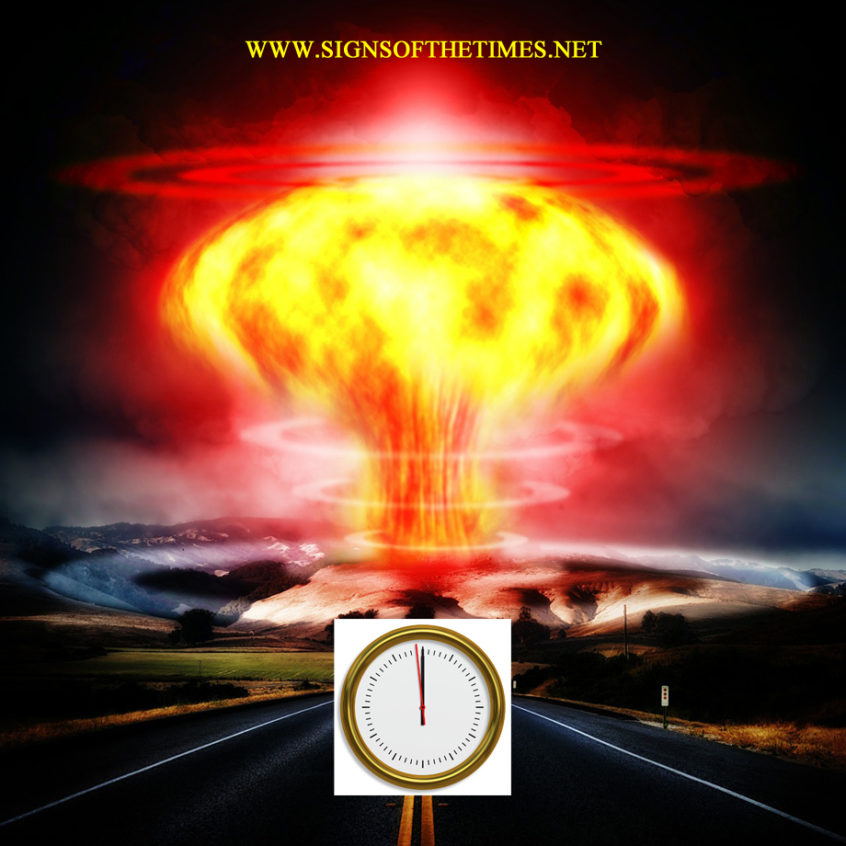

The Doomsday Clock's most recent move this close to the end was three minutes to midnight in 1983, "when U.S.-Soviet relations were at their iciest," BAS explained.

"Since its creation in 1947, the Doomsday Clock has been adjusted only 18 times, ranging from two minutes before midnight in 1953 to 17 minutes before midnight in 1991," said BAS.

The last time BAS moved the Doomsday Clock was in January 2012, according to the statement, when it was moved ahead one minute to five minutes to midnight. and Cold War enemies Russia and China were also cited. Increasing tensions between Islamic extremists and the West, as well as chilling relations between the U.S. to vote overwhelmingly across party lines this week (98-1) in agreement that climate change is real –- a marked shift from Republicans claiming the theory is a hoax. These failures of political leadership endanger every person on Earth."Įarth's warmest recorded year was 2014, according to NOAA, and 14 of the 15 warmest years have occurred since 2000. "World leaders have failed to act with the speed or on the scale required to protect citizens from potential catastrophe. "In 2015, unchecked climate change, global nuclear weapons modernizations, and outsized nuclear weapons arsenals pose extraordinary and undeniable threats to the continued existence of humanity," the group said in a statement. The Bulletin of Atomic Scientists (BAS) moved the infamous Doomsday Clock ahead two minutes, leaving it three minutes from midnight.Ĭiting global warming and increasingly dangerous weapons caches around the world, BAS leaders claimed in a Thursday press conference that the "probability of global catastrophe is very high." Humans are inching closer to a doomsday scenario, experts believe. The bulletin cites "unchecked climate change, global nuclear weapons modernizations, and outsized nuclear weapons arsenals" that pose "extraordinary and undeniable threats to the continued existence of humanity.This content is not available due to your privacy preferences. 2015 - The clock moves to three minutes-to-midnight. 1998- The clock moves to nine minutes-to-midnight after India and Pakistan stage nuclear weapons tests. "The illusion that tens of thousands of nuclear weapons are a guarantor of national security has been stripped away," the Bulletin says. 1991 - The clock drops to 17 minutes-to-midnight as the Cold War officially ends and the US and Russia begin making deep cuts to their nuclear arsenals. "Only a few more swings of the pendulum, and, from Moscow to Chicago, atomic explosions will strike midnight for Western civilization." 1981 - The clock moves to four minutes-to-midnight after the Soviet Union invades Afghanistan and US President Jimmy Carter pulls the US from the Olympics in Moscow. "The hands of the Clock of Doom have moved again," the Bulletin announces. Some key dates in the clock's nearly 70-year history: 1953 - The clock comes the closest it ever has to midnight - just two minutes away - after the US and Soviet Union test hydrogen bombs. The last time it was three minutes to midnight was in 1983, when the Cold War between the United States and the Soviet Union was at its peak. It has changed 18 times since then, ranging from two minutes to midnight in 1953 to 17 minutes before midnight in 1991. The decision to move the clock or not is led by the a group of scientists and intellectuals, including 16 Nobel Laureates. "The fight against climate change has barely begun, and it is unclear if the nations of the world are ready to make the many hard choices that will be necessary to stabilize the climate and avert possible environmental disasters," said Krauss. The decision not to change the clock since 2015 is "not good news," he told reporters.ĭespite some positive news last year, including the Iran nuclear agreement and the Paris climate talks, experts expressed concern that global nuclear arsenals are growing and anti-pollution pledges lack teeth. Global warming, terrorism, nuclear tensions between the United States and Russia, concerns over North Korean weapons, tensions between Pakistan and India, and cyber threats remain destabilizing influences, said Lawrence Krauss, a cosmologist and professor at Arizona State University. "It remains the closest it has been over the past 20 years," said Rachel Bronson, executive director of the Bulletin of the Atomic Scientists, during a press conference in the US capital. The clock serves as a metaphor for how close humanity is to destroying the planet, and was most recently moved closer to midnight in 2015. Washington: Nuclear threats and climate change pose strong threats to the planet and a symbolic "doomsday" clock will stay at three minutes to midnight, the Bulletin of the Atomic Scientists said Tuesday.


 0 kommentar(er)
0 kommentar(er)
